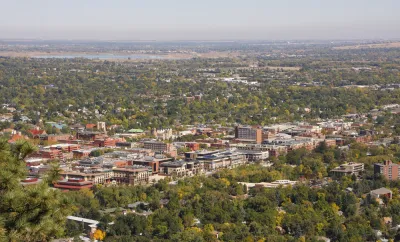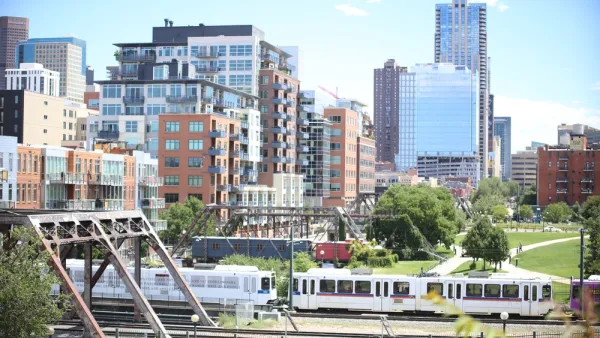The New York Times devotes significant ink to an argument against the use of zoning laws as tools of anti-growth politics.

[Updated 7/6/2017] The headline of a recent article by Conor Daugherty argues a strong claim about planning politics: "Anti-Growth Sentiment, Reflected in Zoning Laws, Thwarts Equality."
The article begins in Boulder, using Steve Pomerance, a former city councilmember that moved to Boulder in the 1960s, as an example of anti-growth advocate. Pomerance, according to Dougherty's description, believes that all of Boulder's charms are under threat: "Rush-hour traffic has become horrendous. Quaint, two-story storefronts are being dwarfed by glass and steel. Cars park along the road to the meadow."
Daugherty offers a counterpoint to those traditional anti-growth political stances: "a growing body of economic literature suggests that anti-growth sentiment, when multiplied across countless unheralded local development battles, is a major factor in creating a stagnant and less equal American economy."
That growing body of research includes a study by Peter Ganong and Daniel Shoag from January 2015, titled "Why Has Regional Income Convergence in the U.S. Declined?" [pdf]. Their work was also picked up by the White House Council of Economic Advisers last year, as the Obama Administration made its first attempt to debunk land use regulations as a tool of social and economic injustice. Daugherty also includes work by Chang-Tai Hsieh and Enrico Moretti [pdf] in the survey of research detailing the consequences of the zoning status quo.
[The photo caption was corrected above.]
FULL STORY: How Anti-Growth Sentiment, Reflected in Zoning Laws, Thwarts Equality

Analysis: Cybertruck Fatality Rate Far Exceeds That of Ford Pinto
The Tesla Cybertruck was recalled seven times last year.

National Parks Layoffs Will Cause Communities to Lose Billions
Thousands of essential park workers were laid off this week, just before the busy spring break season.

Retro-silient?: America’s First “Eco-burb,” The Woodlands Turns 50
A master-planned community north of Houston offers lessons on green infrastructure and resilient design, but falls short of its founder’s lofty affordability and walkability goals.

Test News Post 1
This is a summary

Analysis: Cybertruck Fatality Rate Far Exceeds That of Ford Pinto
The Tesla Cybertruck was recalled seven times last year.

Test News Headline 46
Test for the image on the front page.
Urban Design for Planners 1: Software Tools
This six-course series explores essential urban design concepts using open source software and equips planners with the tools they need to participate fully in the urban design process.
Planning for Universal Design
Learn the tools for implementing Universal Design in planning regulations.
EMC Planning Group, Inc.
Planetizen
Planetizen
Mpact (formerly Rail~Volution)
Great Falls Development Authority, Inc.
HUDs Office of Policy Development and Research
NYU Wagner Graduate School of Public Service




























